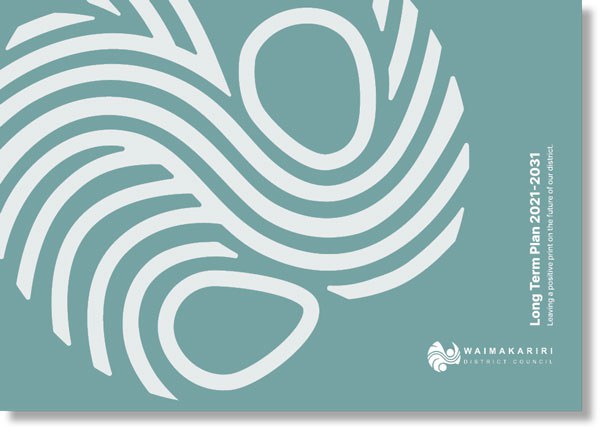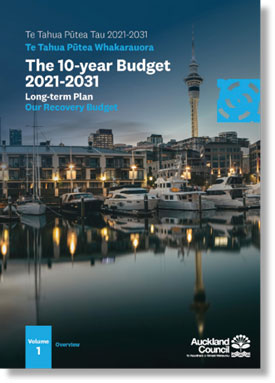Part 1: A well-integrated long-term plan
An effective long-term plan should provide an integrated account of its key components:
- The operating environment and key assumptions (that is, the key external environmental issues that could affect the council and the communities it serves, and the assumptions the council has made on their impact).
- Community outcomes and links to well-being that are presented in a way that is understandable and meaningful to communities.
- Forecast performance measures and targets that provide a meaningful picture of a council’s activities and levels of service, focusing on aspects of service and performance that are of greatest importance to its community.
- Financial and infrastructure strategies that are consistent with the planned levels of service and what the council is aiming to provide for its community.
In general, we found many lengthy long-term plans where it was difficult to track and understand how components of the plan related to each other. In many instances, the structure of a council’s long-term plan made it difficult to understand how the council had considered the interconnections and trade-offs of the different components.
However, we did find examples of good practice.
What to aim for and what to avoid
| What to aim for: |
|---|
| A long-term plan that the community can easily understand and allows meaningful reporting on performance in the annual report. Striking the right balance in being comprehensive and concise – an effective long-term plan should cover the key issues, outcomes, investment decisions, and activities of the council without overwhelming readers with information. Clear logical connections and alignment between the different components of a long-term plan (such as community outcomes, groups of activities, funding impact statement, financial strategy, and infrastructure strategy). Robust analysis and clear descriptions of key challenges, risks, and assumptions in the council’s operating environment and how these affect other components of the long-term plan. Infrastructure and financial strategies that are clear about current and future needs, goals, and trade-offs. Time horizons in the infrastructure strategy that go beyond minimum requirements and are aligned to the lifecycle of the critical assets. |
| What to avoid: |
|---|
| Repeating what was done in previous long-term plans without fresh consideration of its appropriateness. A long and complex long-term plan that some will not want to read. Not enough focus on what matters to communities. Treating the long-term plan as a compliance exercise rather than using it to describe the value the council provides to the community. |
Examples of good practice
Waimakariri District Council
 What we liked in Waimakariri District Council’s 2021-2031 long-term plan
What we liked in Waimakariri District Council’s 2021-2031 long-term plan
The long-term plan tells an integrated story that presents the key issues facing the Council (such as growth) and the impact of these issues on its infrastructure and financial strategies, what it is aiming to deliver, and the levels of service.
The long-term plan:
- sets the scene well with an early section "Meeting levels of service and community expectations", which includes commentary on matters such as the main issue facing the Council, balancing community expectations and affordability, and the impact on levels of service (see pages 58-61);
- has robust analysis and clear descriptions of the main challenges, risks, and assumptions in the Council’s operating environment and how these affect the infrastructure and financial strategies;
- has infrastructure and financial strategies that are clear about current and future needs, goals, and trade-offs; and
- includes specific informative sections on its significant infrastructure projects for groups of activities.

Ashburton District Council
 What we liked in Ashburton District Council’s 2021-2031 long-term plan
What we liked in Ashburton District Council’s 2021-2031 long-term plan
The long-term plan is concise, easy to understand, and outwardly focused, with clear logical flow and connections between the key components.
The long-term plan has:
- a clear, concise, and comprehensive overview of outcomes, strategic direction, consultation with communities, main challenges, and decisions. There is also a timeline of the major projects that are planned for the next 10 years;
- activities and services that are clearly presented with concise and comprehensive descriptions of how these are related to outcomes, issues, projects, and intended levels of service;
- a clear and well-written infrastructure strategy that takes an effective long-term view of the district’s future infrastructure needs and what is needed to address the major issues facing the district in the next 30 years; and
- clear links between the infrastructure and financial strategies.

Selwyn District Council
 What we liked in Selwyn District Council’s 2021-2031 long-term plan
What we liked in Selwyn District Council’s 2021-2031 long-term plan
The long-term plan is well-integrated and provides concise and rich contextual information. The long-term plan is accessible and is clearly presented and written.
The long-term plan:
- is accessible and presented in a manner that is focused on the reader;
- provides succinct and clear background information on progress made since the last long-term plan;
- has significant decisions and projects that are displayed clearly and provide the reader with clarity about what is important for the council; and
- has contextual information that supports the description of the measures with background information and is aligned to the groups of activities.

Auckland Council
Auckland Council is a unitary council. It has wider responsibilities and is not structured like other councils.
Auckland Council’s size means its preparation and adoption of the long-term plan is different from smaller councils. Nevertheless, we have selected examples from Auckland Council’s long-term plan to illustrate what it is doing well.
 What we liked in Auckland Council’s 10-year Budget (2021-2031 long-term plan)
What we liked in Auckland Council’s 10-year Budget (2021-2031 long-term plan)
The long-term plan is comprehensive and integrated. It consists of three volumes with good information describing the council, what’s important to its community, the challenges and issues it faces, and the strategies it will implement.
The long-term plan has:
- a comprehensive snapshot that focuses on the challenges the Council faces, as well as its focus areas, issues, priorities, and funding levers (see page 5, volume 1);
- a well-constructed diagram that shows the relationships between Auckland Plan outcomes and the groups of activities (see page 148, volume 2);
- a well-presented 30-year infrastructure strategy that has two simple diagrams showing contents, components, issues, responses, and an implementation plan (see pages 11-12, volume 2); and
- issues in the infrastructure strategy that are thoroughly described and focus on emerging issues, what the Council is working on, and what the Council already knows.
The Council uses diagrams and a concise narrative to tell its story.
 |
 |

